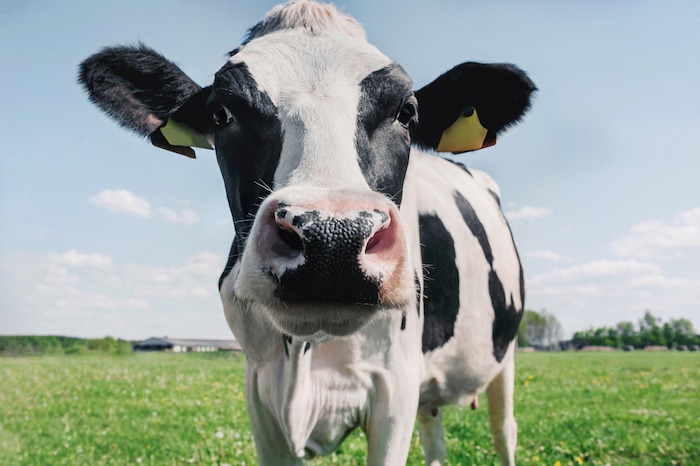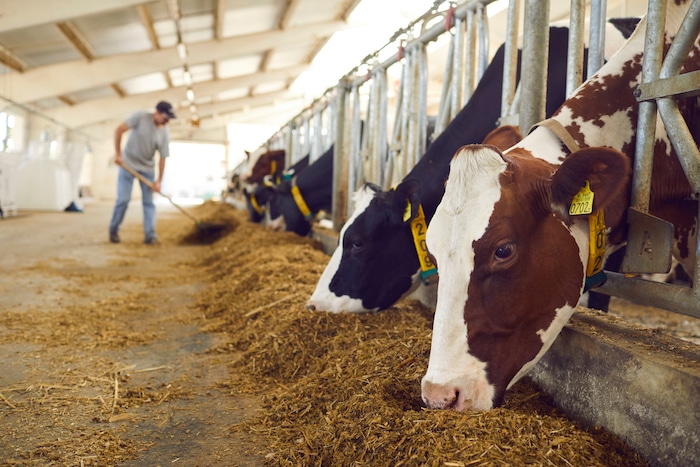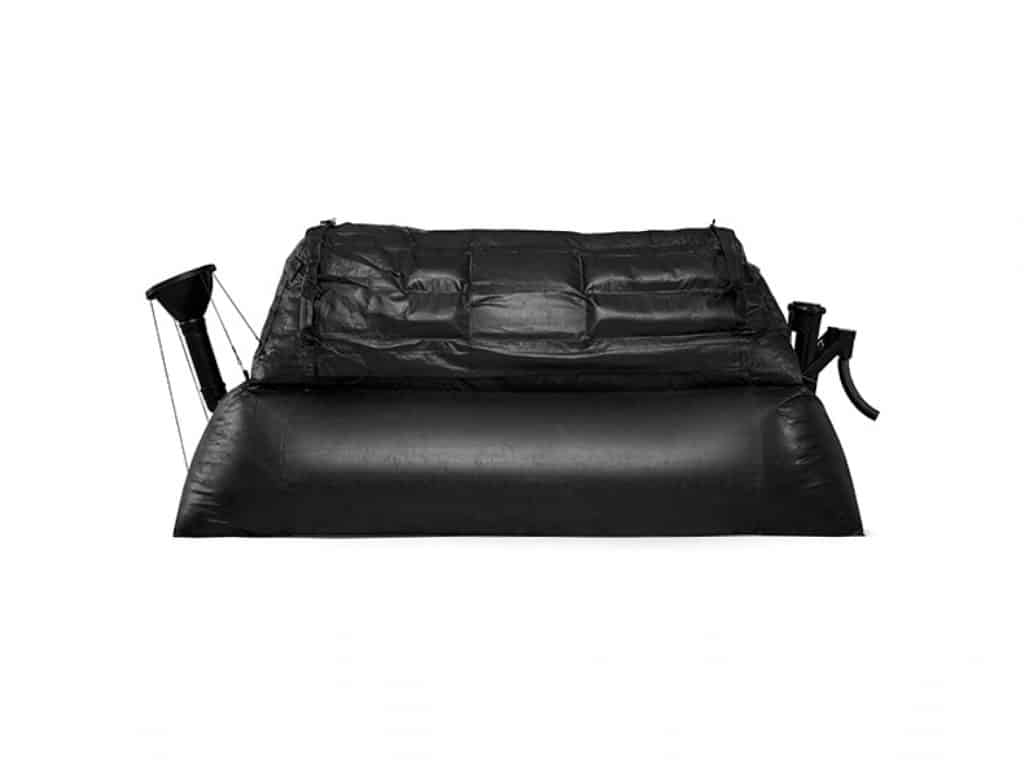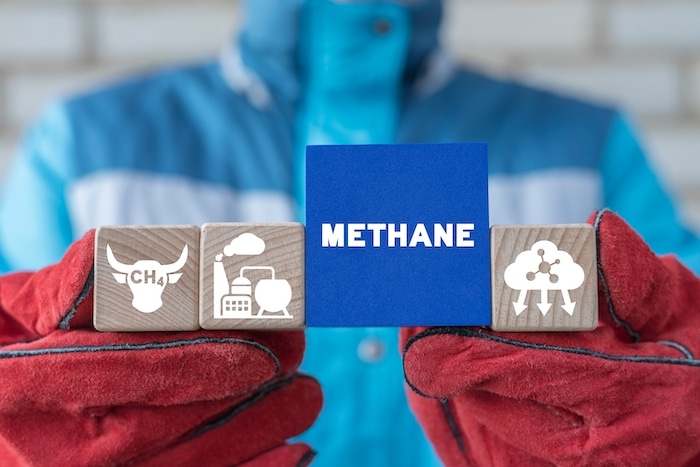
Why Should You Care about Cow Methane Emissions
Imagine a world with 1.5 billion gentle giants impacting all ecosystems. These giants are not mythical creatures but cattle. Individually, these ruminant animals pose no threat. However, their substantial numbers amplify a silent global problem with the methane they produce.

With over 150 million tons of methane exhaled into the atmosphere yearly, cows are the planet’s top methane source — the carbon dioxide equivalent of these emissions surpasses 12 billion tons annually. To put this into perspective, this is a greenhouse gas (GHG) output exceeding the combined annual contributions of the United States, the European Union, and India. Here’s why it matters.
The Science of Cow Methane Production
As ruminants, cows have a complex stomach system with multiple compartments. The largest compartment is called the rumen and acts as a fermentation chamber — where enteric fermentation occurs.
Microorganisms, including bacteria, protozoa, and fungi, ferment the ingested feed inside the rumen. This fermentation process breaks down complex carbohydrates found in fibrous feeds and turns them into volatile fatty acids (VFAs), which the cow uses as a primary energy source. This process produces methane (CH4) as a byproduct. Contrary to common misconceptions, the bulk of this gas doesn’t exit the cow through flatulence. Instead, it’s primarily released via belching, a direct result of the gas buildup in the rumen.
Beyond the digestive process, manure management represents a significant secondary pathway for methane emissions in cattle farming. Manure storage and treatment in anaerobic (oxygen-deficient) environments, such as lagoons, pits, or even under certain field conditions, provide the perfect breeding ground for anaerobic microorganisms responsible for methane generation.
The Role of Diet in Methane Production
The cow’s diet directly influences digestion efficiency and the type and amount of methane produced.
- A high-fiber diet (based on grass and hay) requires more fermentation, producing more methane. In contrast, diets richer in grains and concentrates (more easily digestible carbohydrates) can increase digestion efficiency and reduce methane emissions.

- High-quality forages are more easily digestible and can generate less methane than lower-quality, fibrous forages requiring more extended fermentation periods.
- Certain additives, like fats and oils, can inhibit the methanogens (methane-producing microbes). Nitrates and certain plant extracts (like tannins or saponins) have also been studied for their potential to cut methane emissions from the rumen.
The Impact of Methane on Climate Change
Methane (CH4) has potent greenhouse gas properties. Unlike carbon dioxide (CO2), which remains in the atmosphere for centuries, methane has an atmospheric lifetime of approximately 12 years. However, its global warming potential is 28 times greater than CO2 over 100 years.
Methane’s potency as a greenhouse gas lies in its remarkable efficiency at absorbing and trapping infrared radiation in the Earth’s atmosphere, significantly contributing to the greenhouse effect. This effect increases global temperatures, manifesting in more intense and frequent extreme weather events such as hurricanes, heat waves, and heavy precipitation.

HomeBiogas 4
Designed for the next generation of green innovation.
The warming effect also accelerates the melting of polar ice caps and glaciers, contributing to rising sea levels worldwide. This phenomenon threatens coastal communities and habitats, increasing flooding, erosion, and saltwater intrusion into freshwater systems.
Additionally, the changing climate disrupts ecosystems and biodiversity, altering habitats and food sources for a wide range of species. Such disruptions can endanger species that can’t adapt quickly enough and upset ecological balances.
Since everything in nature is connected, these challenges extend to agricultural productivity, water availability, and public health. So, addressing the root causes of methane emissions is critical in global efforts to mitigate climate change.
Strategies for Reducing Methane Emissions from Cows
1. Changes in Cows’ Diet
One of the fastest ways to limit the impact of cattle farming is by preventing methane emissions with a balanced diet. High-quality, easily digestible forages shorten the fermentation process inside the rumen, thus lowering methane output. Moreover, a well-balanced diet that includes a mix of grains and specialized feeds can improve gut health and efficiency, further cutting down on the amount of methane produced during digestion.

Incorporating probiotics and managing the rumen’s microbial ecosystem will also alter fermentation dynamics. For example, red seaweed added to a cow’s diet in a specific concentration can result in a 12% decrease in methane from cattle. And a feed additive, like 3-nitrooxypropanol (3-NOP), can inhibit enzymes in the rumen responsible for generating methane.
Precision feeding and controlled grazing also help. Farmers minimize waste and stop excess fermentation in the rumen by ensuring that cows consume what they need for optimal health and productivity.
2. Genetic Selection and Breeding
The potential for breeding environmentally friendly cattle opens up new avenues in mitigating agricultural contributions to climate change. Cows with a particular composition of rumen microbes tend to produce less methane, and this trait can be genetically inherited, making selective breeding a viable long-term strategy.
Scientists found that these low-emitting cows don’t compromise productivity. Their milk yield remains high, and the quality of milk, including vital components like fat and protein content, stays the same. This finding is crucial as it addresses one of the primary concerns in livestock management — maintaining or enhancing productivity while implementing sustainable practices.
3. Technological Innovations to Reduce Methane Emissions
Monitoring technologies can provide real-time data on methane emissions, enabling farmers and researchers to identify specific patterns and sources of emissions on a granular level. This detailed information paves the way for implementing precise strategies to mitigate methane release from farming.

Furthermore, AI-driven methods can enhance the accuracy and efficiency of detecting and managing these emissions. In addition to real-time data, farmers gain access to predictive models to better understand and control the factors leading to increased methane emissions from cattle farming.
4. Aerobic Composting of Manure
Traditional manure storage and treatment methods, such as open lagoons and pits, often lead to anaerobic conditions where methane-producing bacteria thrive. Farmers can minimize methane emissions with aerobic composting, which involves regularly turning over manure to maintain aerobic conditions.
When oxygen reaches the microorganisms responsible for breaking down organic matter, it aids in maintaining optimal moisture levels and temperature throughout the pile. Turning the dung also facilitates homogenization, ensuring even decomposition, which accelerates its conversion into compost. Moreover, this process is vital in reducing pathogens and deterring pests, resulting in a safer, more uniform compost product.
Advances in Methane Capture Technology
Despite our best efforts to optimize and reduce methane emissions from cows, eliminating them is an impossible challenge due to the inherent nature of cattle digestion. A prudent approach is to shift the focus towards making the most out of this methane. So, farmers capture the methane and convert it into energy.
One notable advancement in this field is the development of anaerobic digesters. These systems are sealed anaerobic (oxygen-free) environments that transform manure and organic waste. Anaerobic microorganisms break down the material, producing biogas, a fuel that can support electricity and heat generation or even become vehicle fuel.

Another innovative approach uses technology to capture methane emissions directly within livestock housing and manure storage facilities. These systems can collect methane when emitted through belching during digestion or from manure. Once captured, the methane can be stored and used similarly to biogas from digesters, effectively turning a problematic emission into a valuable commodity.
The next step is capturing methane directly from the air, which could complement existing strategies by addressing diffuse methane emissions that are hard to catch at the source. While technically challenging, the successful development of this technology could significantly broaden the scope of methane mitigation efforts not just in agriculture but across multiple industries.
Methane from Cattle Farming FAQs
What causes cows to produce methane?
Cows produce methane primarily through a digestive process called enteric fermentation — microbes in the cow’s stomach break down food and generate methane as a byproduct. Additionally, the gas is emitted from the manure management practices associated with agriculture.
How does methane from cows affect the environment?
Methane from cows is a potent greenhouse gas, trapping heat in the atmosphere more effectively than carbon dioxide. It accelerates climate change and affects weather patterns, ecosystems, and global temperatures.
Can changing cow diets reduce methane emissions?
Yes, altering cow diets can significantly reduce greenhouse gases from agriculture. Certain feed additives and higher-quality forages can improve digestive efficiency and decrease methane production during fermentation.
What are the challenges in reducing methane emissions from cattle?
Addressing methane emissions from livestock involves ensuring that dietary or management changes don’t compromise animal health and productivity. Additionally, the adoption of innovative technologies and practices poses economic and logistical limitations, particularly for small-scale farmers or those in less developed regions.
How can methane emissions from manure be managed?
Anaerobic digestion turns manure into a renewable energy source. Proper manure storage and treatment processes also help reduce emissions by controlling the conditions leading to methane production.
HomeBiogas Solutions
HomeBiogas systems address the methane from cattle farming issue directly at its source — the farm. These systems ingeniously convert cow manure into biogas and bio-fertilizers through anaerobic digestion. Once transformed into biogas for cooking, the manure becomes an asset and helps reduce reliance on non-renewable energy sources.

A HomeBiogas system for a small farm includes a biodigester unit where organic materials, like livestock manure, crop residues, and kitchen scraps, are anaerobically digested by microorganisms to produce biogas and bio-fertilizer. The system includes:
- A sealed digestion tank (an oxygen-free environment)
- A gas storage bag for collecting the produced biogas
- An outlet for the bio-fertilizer
- Input and output systems for feeding the organic matter into the digester and extracting the effluent.
A biogas stove completes the system so you can use the fuel for cooking for maximum efficiency.
The HomeBiogas biodigesters are relatively low-tech and can be scaled to fit a household’s or small community’s needs, making them accessible to low-income countries. The cost savings from reduced need for commercial fuels and fertilizers can also offset the initial investment over time, making it a cost-effective solution for waste management in cattle farming.
The environmental impact of a HomeBiogas system extends beyond methane mitigation. A biodigester embodies the principles of a circular economy — the biogas supports a self-sufficient lifestyle, and the fertilizer contributes to healthier soils and sustainable agricultural practices. The system also improves air and water quality by reducing odors and preventing manure runoff.
Summary
Given the growing number of cattle raised globally, methane emissions accumulate, stressing the urgent need to address the cow methane issue in the broader climate change mitigation agenda.
Potential solutions include optimizing herd sizes to stay balanced with available land resources and employing rotational grazing to enhance pasture recovery and carbon sequestration. Dietary adjustments also play a critical role — feed additives like seaweed or tannin-rich plants can reduce methane production by altering rumen fermentation processes.
Furthermore, technological advancements such as anaerobic digesters on cattle farms can capture methane from manure, converting it into renewable energy and further reducing greenhouse gas emissions. Precision farming technologies, including data analytics and monitoring tools, can optimize feeding strategies and overall herd management to minimize methane output per unit of animal product.






